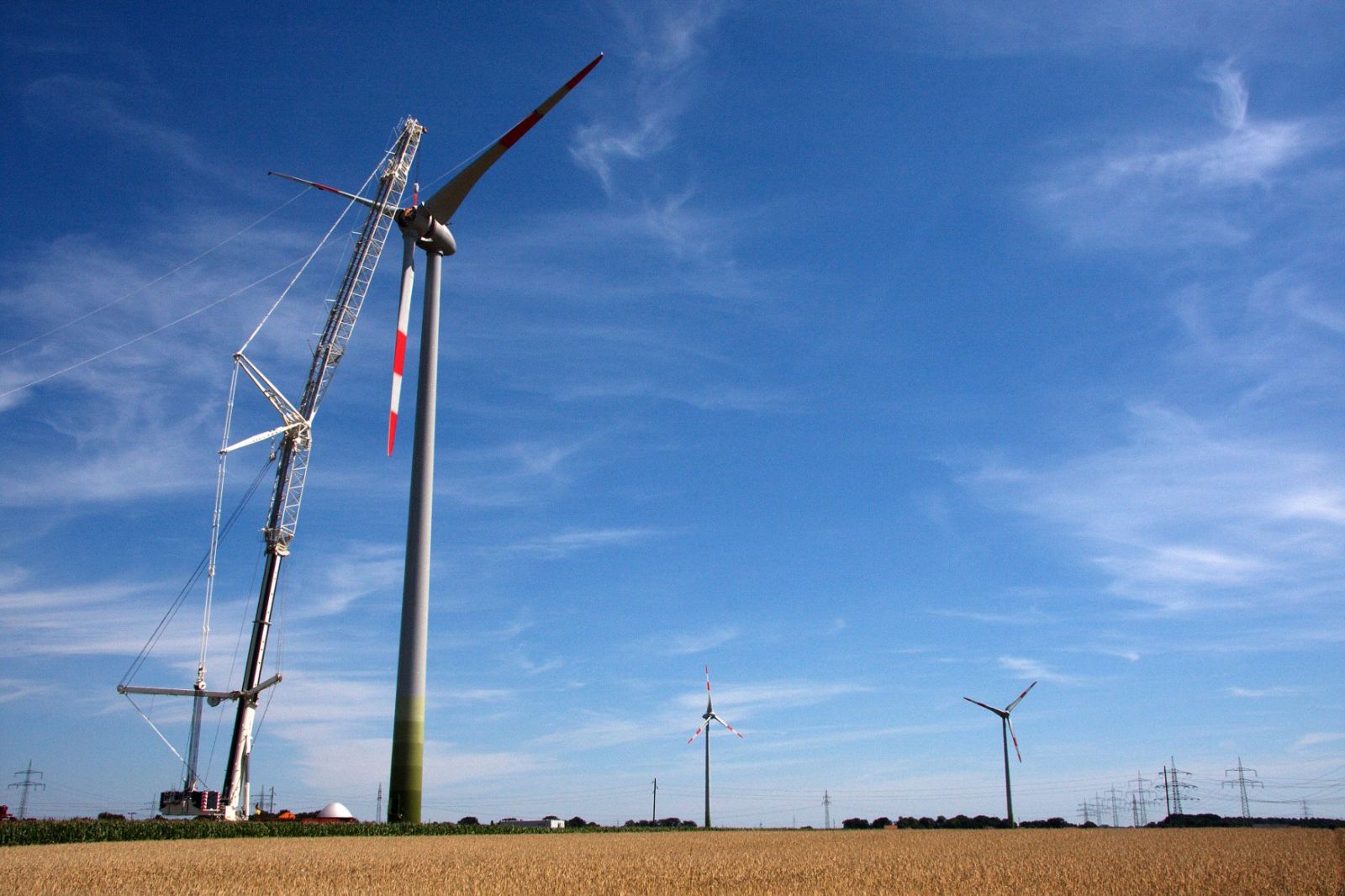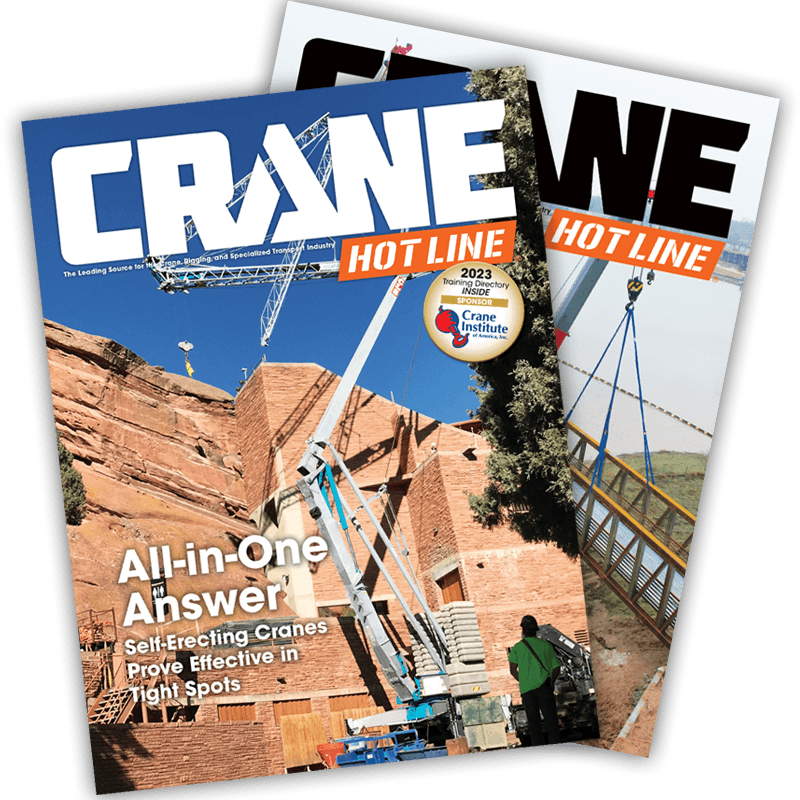Terex AC 1000 Proves Worth on Wind Turbine Erection Projects
 |
Hannover/Paderborn, Germany– On behalf of wind turbine manufacturer ENERCON, crane service provider Neeb-Schuch recently erected a total of four wind turbines in a windpark close to Hannover and a wind turbine in Benhausen, Paderborn, using a Terex AC 1000.
The Terex AC 1000 all-terrain crane can travel on public roads with its boom. Neeb-Schuch GmbH recently took advantage of this and used the crane to erect wind turbines for two different projects.
The Hannover Project
The all-terrain crane arrived to the first site in Landesbergen, near Hannover, while carrying its 50 m telescopic boom. There, the crane had to erect four ENERCON E70 wind turbines with a hub height of 84 m, two at one location and the other two at a neighboring one. The maximum weight for each load lifted was 66 t.
The crane was set up with an SSL configuration, a 188 t counterweight, and a 54 m-long luffing fly jib on a 12 m variable extension (VA). A three-sheave hook block was installed with five wire ropes in order to pick up the load with a 13.5 m outrigger. The AC 1000 required one assist crane to mount its four outriggers, set hoist 0, mount the SSL system, extension adapter, and luffing fly jib – the rest was rigged by itself. “This meant that we were able to set up the huge crane for the first two lifts in no time with only three workers. As for the lifts, they went perfectly smoothly,” explains crane operator Reiner Wege. He extended the main boom in three steps for the procedure, starting at 29.9 m, then extending to 34 m, and ending at 39.1 m.
The AC 1000 showcased its high level of flexibility when it had to move to the project’s second site, traveling a distance of about 500 m with a configuration that included the luffing fly jib’s base, the extension adapter, the superlift system, the mounted outriggers, and 68 t counterweight. The 270-t colossus traveled through an unpaved country road which was meant for tractors. “Of course we left nothing to chance,” explains Terex Support team member Rainer Staab, who supervised the project on site. “The design engineers in charge calculated the exact load distribution and the road’s load-bearing capacity in advance and gave us the go-ahead.”
For the last two lifts, the crane was placed about 30 m in front of the wind turbines’ foundation and had to work with a large working radius. Just as in the previous lifts, the machine lifted a maximum total load of 66 t. Rainer Wege was also able to easily handle these lifts with the AC 1000: “Even though I was already familiar with Terex equipment after countless projects using the AC 500, I was surprised at just how quickly I became comfortable operating the AC 1000,” reports the crane operator.
The Paderborn Project
The Terex AC 1000 all-terrain crane’s second assignment was at a site in Benhausen, Paderborn, where the Neeb-Schuch team also erected an ENERCONE70 wind turbine. In contrast to the previous assignment, the tower was a concrete structure made up of 22 rings, each one with a height of 3.80 m, totalling more than 80 m. Also, in this case, the maximum weight of the concrete elements was 84 t. The crane’s superlift configuration was identical to the one in Hannover.
The area for crane set up proved to be tricky as the roads that were prepared were too close to the wind turbine’s foundation. This meant that the AC 1000 luffing jib had to be set up over open, unprepared terrain. Thanks to the small dimensions of its components and the patented luffing fly jib erecting system, the crane was set up quickly and without complications.
The crane was in service for several hours, as the tower’s structure required a large number of lifts. “The AC 1000 easily and smoothly handled almost 50 lifts without the slightest variation in precision, the highly effective and easy-to-use IC-1 touchscreen control system played a very important role,” explains Wege.
“Just as we expected, the Terex AC 1000 proved itself in these two projects and showcased both its outstanding performance characteristics and high degree of flexibility,” summarizes Staab.


